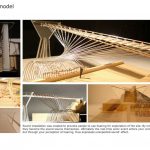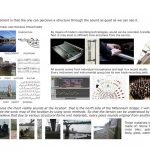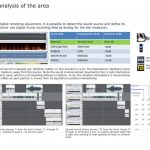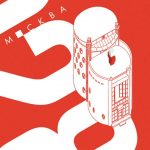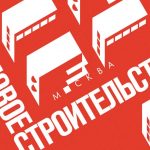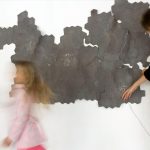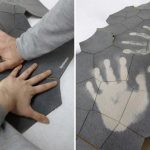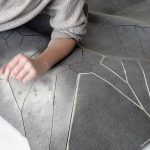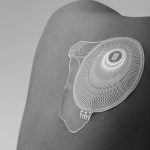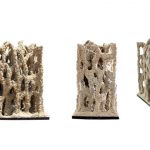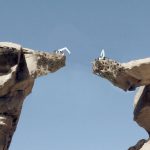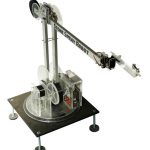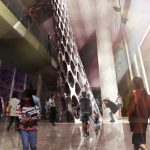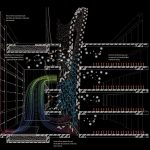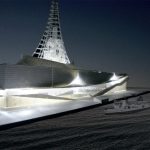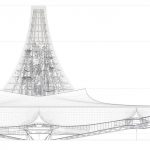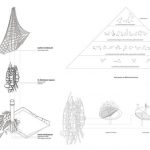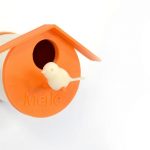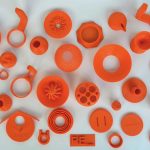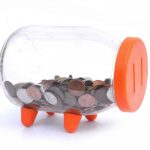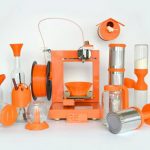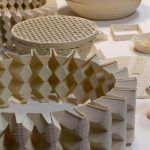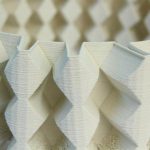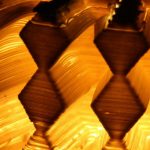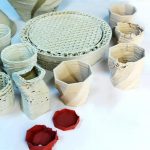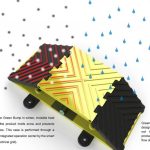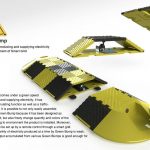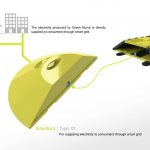NOMINATION: CAST
ALEXANDRA KHARAKOZ (UK, Lewes)
Sonic Landscape
Sonic Landscape is a sound installation /pavilion for London’s Millennium Bridge to boost awareness of and interest in exploring the world through sound. Unexpected sounds suddenly emerge to surprise the listener. The installation is designed to facilitate listening to and producing sound. People interact with the site to generate sound, following the sound paths in the pavilion to turn it into a large-scale, real time sonic sculpture.
DAN ORLOVSKY (Russia, Moscow)
Moscow — Constructivism
A promotional tool to develop a new sector of cultural tourism in Moscow: the Russian architectural avant-garde, to draw attention to this design phenomenon ,preserve it and contine to be inspired by the heritage of 1920-1930s.
ESZTER OZSVALD (Hungary, current city New York)
SymbiosisO – objects in a symbiotic relationship – is a collection of active materials that respond to the surrounding environment with a change in color, light or motion. We call these materials soft interfaces and slow displays. Their visual state can be configured and programmed.
SymbiosisO is based on a hybrid material composition and suggests novel human-computer interaction through the soft material. A member of the collection, SymbiosisW (“Wall”) is a three-dimensional material constructed of hexagonal cells. It senses human touch and as a response, small cell-patterns start to grow out under the person’s hand. SymbiosisO: Voxel is a large-scale display system constructed of 100 hexagon shaped pixels or “voxels” made of flexible material. Their content can be manipulated from the web browser and the organic pattern evolvement can be observed. SymbiosisO offers an unique solution to deliver content to a given space. These displays are tangible and powerful; they present information through intuitive interaction, stimulating one’s tactile and visual sensation. Our aim is to explore and develop traditional, interior objects (pillows, wall designs, carpets) with extended functionality. The activated pattern can be text, visual symbols or a variety of information. We envision these objects and surfaces in public spaces, waiting rooms, offices and living environments; generally in places where people spend time. Our concept is a tribute to the ultimate power of evolution, where not only the human civilization impacts the environment, but nature itself reacts and adapts to these changes. With SymbiosisO our objective is to develop organic, cutting edge objects that bring natural rhythms back to the cityscape.
NOMINATION: CITY
ANNA KULIK (Russia, Moscow)
Stone Spray
A research project by Anna Kulik under the supervision of Marta Mal-Alemany, Jordi Portell and Miquel Il¬overas of IAAC. ‘Stone Spray’ is a robotic 3D printer that produces architecture out of soil. The team’s research was focused on the field of additive manufacturing in architecture, finding means of proposing new eco-friendly, efficient and innovative systems to print architecture in 3D. The mechanized device collects dirt/sand on site and then sprays it from a nozzle in combination with a binder component. When this mixture hits the surface it solidifies to create sculptural forms. The designer controls the ‘stone spray’ robot which, unlike other 3D printers, can print multi-directionally, even on vertical surfaces. The results become rock-hard in several days and, with their organic forms, become structurally very strong.
Sand Wall The sand wall experiment shows that the system can be applied on an architectural scale. The result represents a section of a wall. A script was developed to optimize the structure making it strong enough to support not only itself, but also bear a load. Size of the wall: 500 mm x 150 mm x 400 mm. Sand Stool The structure holds itself without any support material – it only uses sand and the soil-solidifier. The size of the stool: 400mm x 400mm x 400mm. Sand Tree The ‘sand tree’ experiment explored the possibilities of multi-directional spraying without scaffold¬ing. As a result the rules of length and angle proportions were created.
CHAK MING SIN (Hong Kong, Hong Kong)
Evaporative Cooling Capillary
Building C is located on the periphery of the Tongji University Siping Lu campus in Shanghai. Its isolated location and poor environmental qualities create many ventilation, heat and pollution problems for users.
This project aims to solve the problems by incorporating a capillary system into the building that will act as an evaporative cooling mechanism. The design is inspired by termite mounds which use an evaporative cooling system to regulate their interior temperature; a continuously open and closed vent discharges air through a channelling system. This is in effect a highly intelligent technology: evaporative cooling. Inspired by nature’s solution, we decided to incorporate an evaporative cooling system into Building C to solve the ventilation problem. The Spanish Pavilion at the Zaragoza Expo 2008, which used a porous ceramic pillar for evaporative cooling, was also a reference for me. It proves that increasing the surface area allows a longer contact time for heat exchange between air and water particles which improve cooling efficiency. Further experimentation proves that an increase of approximately 20% in surface area can yield 1 degree celsius in temperature decrease.
Our solution acts like a blood capillary, offering an increased surface area for nutrient exchange to body cell. Besides improving environmental quality, the new capillary system also offers users and vistors a new architectural experience. We envisage that this evaporative cooling capillary can serve not only as a solution for Building C, but also as a structure in itself. It can become a tower or facade system that can be applied to any building typologies in the future to ease various environmental problems.
CHUNG WO CHAU(Hong Kong, Hong Kong)
Inflected Massing
Hong Kong is running out of space for waste treatment and management. The government is planning to build an Integrated Waste Management Facilities (IWMF) in Shek Kwu Chau to ease the problem. However, this triggers public concern on this large construction as people’s impression of this kind of facility is usually visually intrusive and unpleasant. This project aims to activate and dissolve the boundary of IWMF facilities for the public, creating a more inviting but distinctive experience based on the current masterplan, provided that the location for different programs is unchanged, as they are precisely calculated by professional engineers.
The whole facility is considered as one centralized mass for machine operation and workers. Another mass is social and functional space for visitors and public, locating along the periphery of the site. The idea of this project is to focus on how these two masses interact and are differentiated between to create a series of inflection points, through dissolution of the surfaces between the two. At these particular points, the inside will be outwardly focused and the outside will invite one in. Visitors are no longer totally inside or detached from the mechanical mass, but they experience the transition between inside and outside. At the site scale, Lantau Island is located in the North-West ,while Cheung Chau is located to the North-East. Taking into consideration the concern of residents, including view and air pollution, our whole massing opens up to the South-West, facing the open sea , with minimal impact on the surroundings.
NOMINATION: FORM
BERNIER SAMUEL (Canada, Montreal)
Project RE_
A third industrial revolution is taking place. Digital manufacturing is creating a world where mass customization becomes possible… and cheap. 3D printing technology is improving every day and many companies have made it possible for anybody to have a machine at home. I dream of an industry where there is no environmental impact associated with products being shipped across the globe… several times. A world where anybody can download what they need from a virtual library of objects and materialize it locally. This project is a transition phase where additive manufacturing is used to upgrade or transform existing objects reaching the end of their useful life. A little input to give some of our most daily junk a new function. The subject chosen for the first experiment is glass jars and tin cans, very useful for their regular dimensions. There are so many ways to reinvent objects we forget to appreciate: bird house, snow globe, watering can, piggy bank…
ERAN GAL-OR (Israel, Holon)
Poetic Machine – 3d printing porcelain
Using a 3D Printer, which I designed and manufactured for this project, I have made objects in porcelain, clay and even glass.
3D printing allows one to create complex forms, while significantly reducing the amount of time required for the creation process. Three-dimensional printing also enables new creative forms to be explored. During this project, light fixtures and vessels were designed from porcelain. These products manifest the technological possibilities in the medium of three-dimensional printing. This is the largest ceramic 3d printer in the world (80x80x80cm build envelope) which was built using regular tools in my university (H.I.T institute) workshop. Please watch this short movie I’ve created.
TAEWAN KIM (South Korea, Seoul)
Green Bump
Green Bump creates electricity for consumers or for charging electric cars, giving it dual functionality: energy-generating and traffic-calming. It is not only easy to assemble and take apart, because it is modular in design, but it can also be customized for specific environments and can be installed by remote control through a ‘smart’, or ‘intelligent’ electrical grid. Currently there are a huge number of speed bumps on our roads that could be turned into a significant energy source.











